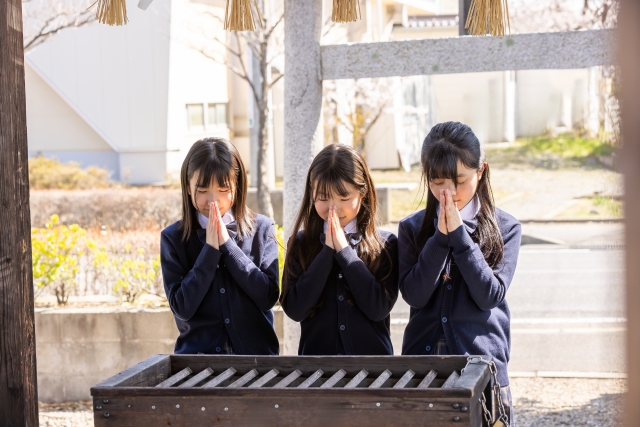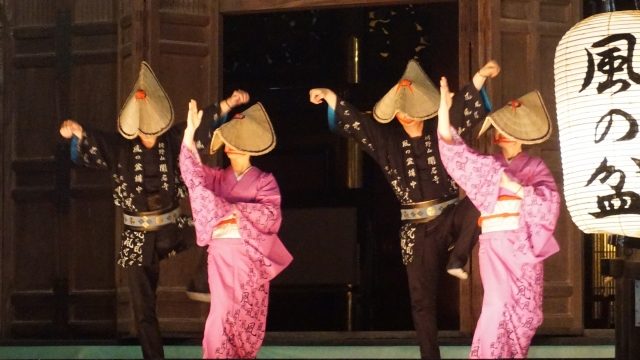「願掛け」は、願いが叶うまで特定の行為を続けたり、何かを我慢したりする日本独特の習慣です。
受験合格を願って好物を断つ、恋愛成就のために毎日神社に参拝するなど、様々な形で実践されています。
西洋の「誓い(vow)」に似ていますが、神仏との「取引」のような側面があるのが特徴です。
本記事では、願掛けの意味、歴史、具体的な種類、そして外国人に英語で説明する際のポイントまで徹底解説します。
日本の精神文化や民間信仰に興味がある方、日本文化を海外に伝えたい方は必見です。
願掛けの基礎知識
願掛けとは、願い事を叶えるために、願いが成就するまで特定の行動を続けたり、好きなものを我慢したりする日本の伝統的な習慣です。「掛ける」には「賭ける」の意味もあり、自分の努力や犠牲と引き換えに願いの実現を求める行為とも言えます。
英文での紹介: “Gangake is a traditional Japanese practice of making a personal vow or commitment to perform certain actions or abstain from pleasures until a specific wish comes true. The word combines ‘gan’ (願) meaning ‘wish’ and ‘kake’ (掛け) meaning ‘to hang’ or ‘to wager.’ It’s essentially a spiritual bargain with deities or the universe—you demonstrate your seriousness and dedication through self-discipline or repeated actions, and in return, you hope your wish will be granted. Common examples include giving up your favorite food until you pass an exam, visiting a shrine every day until you find love, or abstaining from alcohol until a business deal succeeds.”
対訳: 「願掛けは、特定の願いが叶うまで、特定の行動を実行したり快楽を我慢したりする個人的な誓いや約束をする日本の伝統的な習慣です。この言葉は『願』(gan)つまり『願い』と、『掛け』(kake)つまり『掛ける』または『賭ける』を組み合わせたものです。本質的には神々や宇宙との精神的な取引です。自己規律や繰り返しの行動を通じて自分の真剣さと献身を示し、その見返りとして願いが叶えられることを望みます。一般的な例には、試験に合格するまで好きな食べ物を我慢する、恋愛を見つけるまで毎日神社を訪れる、ビジネス取引が成功するまでアルコールを控えるなどがあります。」
願掛けの歴史的背景
願掛けの起源は古く、日本の神道や仏教の影響を受けて発展してきました。平安時代には貴族が願い事のために断食や参籠(お寺に籠もること)を行っていた記録があります。江戸時代には庶民の間にも広まり、様々な願掛けの方法が生まれました。
英文での紹介: “The practice of gangake has ancient roots in Japanese Shintoism and Buddhism. Historical records from the Heian period (794-1185) show that aristocrats performed fasting or seclusion in temples (sanrō) to petition the gods for favors. During the Edo period (1603-1868), these practices spread to commoners, who developed more accessible forms of gangake. The underlying philosophy draws from the Buddhist concept of asceticism—that voluntary suffering or self-denial purifies one’s intentions and demonstrates worthiness to receive divine blessings. It also reflects the Shinto idea of reciprocity between humans and kami (deities), where offerings and sacrifices create a relationship of mutual obligation.”
対訳: 「願掛けの習慣は、日本の神道と仏教に古代のルーツを持っています。平安時代(794-1185年)の歴史的記録には、貴族が神々に恩恵を請願するために断食や寺院での隔離(参籠)を行っていたことが示されています。江戸時代(1603-1868年)には、これらの習慣が一般庶民にも広がり、よりアクセスしやすい形の願掛けが開発されました。根底にある哲学は、自発的な苦しみや自己否定が意図を浄化し、神の祝福を受けるに値することを示すという仏教の禁欲主義の概念から引き出されています。また、供物や犠牲が相互義務の関係を作り出す、人間と神(神々)の間の互恵性という神道の考えも反映しています。」
願掛けの具体的な種類
願掛けには様々な形があります。食べ物を断つ「断ち物」、毎日続ける「日参」、神社の絵馬に願いを書く、だるまの片目を入れる、千羽鶴を折るなど、目的や個人の信念によって選ばれます。
英文での紹介: “There are numerous forms of gangake in Japanese culture:
• Tachimono (断ち物 – abstaining): Giving up something you enjoy, like sweets, coffee, or television, until your wish is fulfilled. Students often abstain from leisure activities while preparing for entrance exams.
• Nissān (日参 – daily visits): Visiting a shrine or temple every single day to pray for the same wish, demonstrating consistency and devotion.
• Ema dedication (絵馬): Writing your wish on a wooden plaque at a shrine and leaving it there for the deity to consider.
• Daruma doll ritual: Painting one eye of a daruma doll when making a wish, then painting the second eye only when the wish comes true.
• Senbazuru (千羽鶴): Folding 1,000 paper cranes, often for healing or peace-related wishes.
Each method emphasizes different aspects—sacrifice, perseverance, or creative effort—but all require sustained commitment.”
対訳: 「日本文化には数多くの形の願掛けがあります:
• 断ち物(たちもの – 禁欲):願いが叶うまで、お菓子、コーヒー、テレビなど、自分が楽しんでいるものを諦めること。学生は入学試験の準備中、よく余暇活動を控えます。
• 日参(にっさん – 毎日の訪問):同じ願いのために毎日必ず神社や寺を訪れ、一貫性と献身を示すこと。
• 絵馬の奉納(えま):神社で木製の額に願いを書き、神に考慮してもらうためにそこに残すこと。
• だるまの儀式:願いをかけるときにだるま人形の片目を塗り、願いが叶ったときにのみ2つ目の目を塗ること。
• 千羽鶴(せんばづる):1,000羽の折り鶴を折ること。多くの場合、治癒や平和に関連する願いのため。
各方法は、犠牲、忍耐、または創造的な努力など、異なる側面を強調しますが、すべて持続的な献身が必要です。」
願掛けに込められた心理と文化
願掛けは単なる迷信ではなく、心理的にも意味があります。自己規律を保つことで目標への集中力が高まり、また願掛けを続けることで「これだけやったのだから叶うはず」という自信も生まれます。日本人の「努力は報われる」という価値観とも深く結びついています。
英文での紹介: “Gangake is more than superstition—it has genuine psychological benefits. By practicing self-discipline through gangake, people maintain focus on their goals and create a tangible connection between their actions and their aspirations. The sacrifice involved serves as a constant reminder of what you’re working toward. Additionally, the cumulative effort builds confidence: ‘I’ve done so much, surely it will come true.’ This reflects the deeply ingrained Japanese cultural belief that ‘doryoku wa mukuwareru’ (努力は報われる – effort is rewarded). Gangake also provides a sense of control in uncertain situations. When outcomes are beyond your direct influence—like exam results, medical diagnoses, or romantic feelings—gangake offers a way to feel actively engaged rather than helplessly waiting.”
対訳: 「願掛けは迷信以上のものであり、真の心理的利益があります。願掛けを通じて自己規律を実践することで、人々は目標に集中し続け、自分の行動と願望の間に具体的なつながりを作り出します。伴う犠牲は、自分が何に向かって働いているかの絶え間ない思い出となります。さらに、累積的な努力は自信を築きます:『これだけやったのだから、きっと叶うだろう』。これは、『努力は報われる』という深く根付いた日本の文化的信念を反映しています。願掛けはまた、不確実な状況において統制感を提供します。試験結果、医学的診断、または恋愛感情のように、結果が直接の影響を超えている場合、願掛けは無力に待つのではなく、積極的に関与していると感じる方法を提供します。」
現代における願掛け
現代日本でも願掛けは形を変えながら続いています。受験シーズンには「キットカット(きっと勝つ)」を食べる、スポーツ選手がゲン担ぎのルーティンを守るなど、伝統的な願掛けと現代のライフスタイルが融合した形も見られます。
英文での紹介: “Gangake continues to evolve in modern Japan, blending tradition with contemporary life. During exam season, students eat KitKat chocolates because the name sounds like ‘kitto katsu’ (きっと勝つ – surely win). Athletes maintain superstitious routines before competitions. Some people set personal challenges on social media, publicly committing to gangake-style practices like ‘no social media until I finish my project’ or ‘daily exercise until I reach my goal weight.’ While younger Japanese may not explicitly call these practices gangake, the underlying principle remains: demonstrating commitment through consistent action or meaningful sacrifice. Even in secular contexts, the gangake mindset persists as a motivational tool and cultural habit.”
対訳: 「願掛けは現代日本で進化し続け、伝統と現代生活を融合させています。試験シーズン中、学生はキットカットチョコレートを食べます。名前が『きっと勝つ』のように聞こえるためです。アスリートは競技前に縁起担ぎのルーティンを維持します。一部の人々は、『プロジェクトを終えるまでソーシャルメディアを見ない』や『目標体重に達するまで毎日運動する』など、願掛けスタイルの習慣に公に取り組むことで、ソーシャルメディアで個人的な挑戦を設定します。若い日本人はこれらの習慣を明確に願掛けと呼ばないかもしれませんが、根底にある原則は残っています:一貫した行動または意味のある犠牲を通じて献身を示すこと。世俗的な文脈でさえ、願掛けのマインドセットは動機付けのツールおよび文化的習慣として存続しています。」
願掛けと似た世界の習慣
願掛けに似た習慣は世界中に存在します。キリスト教の四旬節の断食、イスラム教のラマダン、西洋の「New Year’s Resolution」などです。しかし、願掛けは特定の個人的な願いと結びついている点が特徴的です。
英文での紹介: “Similar practices exist worldwide: Christian Lenten fasting, Islamic Ramadan, Hindu vratas (religious vows), and Western New Year’s resolutions all involve self-discipline for spiritual or personal goals. However, gangake is distinctive in several ways. Unlike religious observances with fixed calendars, gangake is entirely personal and self-initiated, tied to specific individual wishes rather than communal spiritual practice. It’s also more transactional—there’s an explicit expectation that your sacrifice will lead to a specific outcome, rather than general spiritual improvement. When explaining gangake to Westerners, you might compare it to ‘making a deal with fate’ or a personal spiritual contract, emphasizing both the self-determination and the hope for concrete results.”
対訳: 「似たような習慣は世界中に存在します:キリスト教の四旬節の断食、イスラム教のラマダン、ヒンドゥー教のヴラタ(宗教的な誓い)、そして西洋の新年の抱負はすべて、精神的または個人的な目標のために自己規律を伴います。しかし、願掛けはいくつかの点で独特です。固定された暦を持つ宗教的な儀式とは異なり、願掛けは完全に個人的で自発的であり、共同体の精神的実践ではなく特定の個人的な願いと結びついています。また、より取引的です。一般的な精神的向上ではなく、あなたの犠牲が特定の結果につながるという明確な期待があります。願掛けを西洋人に説明する際には、『運命と取引をする』または個人的な精神的契約と比較し、自己決定と具体的な結果への希望の両方を強調するとよいでしょう。」
外国人に伝える際のポイント
願掛けを外国人に説明する際は、単なる迷信としてではなく、目標達成のための心理的ツールとして紹介すると理解されやすくなります。また、具体的な例を挙げることで、イメージしやすくなります。
英文での紹介: “When explaining gangake to foreigners, frame it as both a cultural tradition and a practical psychological strategy. Emphasize that it’s not about magic, but about creating accountability and maintaining motivation through visible commitment. Share relatable examples: ‘A student might give up video games until exam results come out,’ or ‘Someone hoping for a promotion might visit a shrine every morning before work.’ You can also explain that gangake doesn’t require religious belief—even non-religious Japanese people practice it as a motivational technique. Mention that the practice acknowledges human psychology: we value things more when we sacrifice for them, and public or personal commitments help us stay disciplined. This makes gangake accessible to people from any cultural background as a universal principle of goal-setting and self-discipline.”
対訳: 「願掛けを外国人に説明する際は、文化的伝統と実用的な心理的戦略の両方としてフレーム化してください。魔法ではなく、目に見える献身を通じて説明責任を作り出し、モチベーションを維持することだと強調してください。関連性のある例を共有してください:『学生は試験結果が出るまでビデオゲームを我慢するかもしれない』や『昇進を望んでいる人は仕事前に毎朝神社を訪れるかもしれない』。また、願掛けには宗教的信念は必要ないことも説明できます。宗教的でない日本人でさえ、動機付けのテクニックとして実践しています。この習慣は人間の心理を認識していることに言及してください:私たちは犠牲を払ったものをより価値あるものと考え、公的または個人的な約束は規律を保つのに役立ちます。これにより、願掛けは目標設定と自己規律の普遍的な原則として、あらゆる文化的背景を持つ人々にアクセス可能になります。」
まとめ
願掛けは、日本人の精神性と実用性が融合した独特の文化習慣です。古代から続くこの伝統は、願いを叶えるために自己犠牲や継続的な努力を捧げるという考え方に基づいており、「努力は報われる」という日本的価値観を体現しています。
現代では形を変えながらも、受験や就職、恋愛など、人生の重要な場面で今も実践されています。外国人に願掛けを紹介する際は、迷信としてではなく、目標達成のための心理的戦略と文化的伝統の組み合わせとして説明することで、より深い理解と共感を得ることができます。願掛けは、日本文化の奥深さと、人間の普遍的な願いへの向き合い方を示す素晴らしい例と言えるでしょう。
外資系企業への英語面接サポート・サービスで不安を解消しましょう!
stephenpong.com では、おひとりおひとりに合わせて
英語面接のサポートをレジュメの作成段階からご指導致します
まずは、お問い合わせください
自分で用意した英文レジュメはこれでいいのかな?
英語面接の質問とその答え方はどう準備したらいいの?
英語の面接に不安を感じる、模擬面接で練習したい?!
これらのお悩みをすべて解決します!
お気楽に下記フォームからご相談ください!
人生を動かしましょう!
ごく稀に、返信メールがお客様の迷惑フォルダに紛れ込んでいる場合がありますのでご注意ください。
















